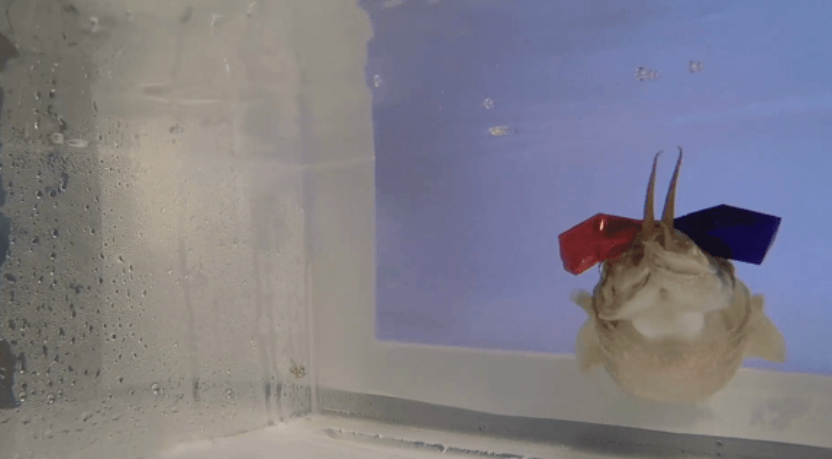
We tend to think we know everything about our planet and everything about our environment, but time and again, nature proves us wrong. For instance, cuttlefish have been existing with humans for an undoubtedly long time but rarely is known about them. In a recent study, these cephalopods were made to wear tiny 3D glasses to understand how the eyesight of these marine animals works.
In this recently published journal, scientists from the University of Cambridge in the United Kingdom found out that the cuttlefish is able to see things in three-dimension similar to how the human eyesight works: through depth perception or stereopsis. However, the scientists discovered that there is a different mechanism behind a cuttlefish's stereopsis. According to neuroscientist Rachael Feord, this study is a step forward to understanding how different nervous systems have evolved to solve the same problem.
Among all creatures in kingdom Animalia, the cuttlefish is among those who have an unusual set of eyes: one, they can only see in black and white since they only have one photoreceptor. Two, their W-shaped pupils make up for the lack of photoreceptors in order to perceive colors, albeit, in an entirely different way compared to vertebrates.
In humans, the shape of the lens in our eyes change when we focus our sights on a specific subject. However, in cuttlefish, the lens actually changes positions. What's more amazing is that, unlike humans, cuttlefish can have a full 360-degree view of its surroundings because its eyes face opposite directions. Compared to other species of cephalopods, cuttlefish eyes have the advantage of being forward-facing, hence, the ability to rely on stereopsis to measure distances or surveying the environment. Because of these findings, scientists theorized that the cuttlefish is different from its cephalopod relatives like the squid and shrimp.
To put the cephalopod eyesight to the test, the scientists glued a small velcro between the eyes of 14 cuttlefish specimens where they eventually placed the 3D glasses. It all seemed promising until three of the cuttlefish removed their glasses upon their return to their tanks, much to the scientists' amusement.
The scientists then trained the 14 cuttlefish to strike at their prey while wearing their 3D glasses. The cuttlefish tanks were placed in front of a computer screen. In it were two different-colored shrimps walking. The images were developed to appear as if they're in front of or behind the screen through the 3d glasses worn by the cuttlefish. According to the research, if cuttlefish possess the ability of stereopsis, it will attack its prey in the position given -- which, it did.
In a press release statement issued by the University of Minnesota, Trevor Wardill, a sensory neurobiologist from the College of Biological Sciences explained that the way the cuttlefish reacted to the disparities made it clear that it uses stereopsis especially in hunting for prey. "When only one eye could see the shrimp, meaning stereopsis was not possible, the animals took longer to position themselves correctly." He explained. Because of the ability to perceive depth, the cuttlefish is able to make decisions quickly upon attacking its prey.
With the new data provided by this study, it is now recorded the cuttlefish is the second known invertebrate species that can use stereopsis second to the praying mantis. However, the praying mantis is different from humans in terms of stereopsis in the way that praying mantis can only focus on things that are moving. Even though biologists are still not sure how cuttlefish stereopsis work, they are sure that it has something to do with how their brain works.
For scientists, the next step in this research is to study the brain circuits of the cuttlefish to find out how stereopsis in the species works.
© 2025 ScienceTimes.com All rights reserved. Do not reproduce without permission. The window to the world of Science Times.










